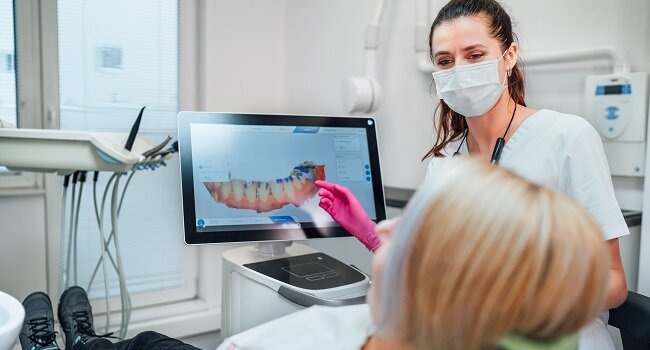What did the dentist say to the tooth when he had to leave the room? ‘I’ll fill you in when I get back.’ Now that the field of dentistry has made many technological advances, the dentist does have a lot to fill in. Dental care has taken leaps and bounds in innovating treatment and procedures, putting the patients’ welfare in the middle of it all. This article will give you a run-through of these.
Technological Advances in Different States
While adopting digital dentistry technologies is a global phenomenon, some states have emerged as frontrunners in embracing these advancements. For instance, Oregon boasts of their prowess in practicing technological innovations. The place is a home for many research institutions, that’s why our dentist in Portland suggests that dentists and patients collaborate in trying new methods of taking care of one’s dental health.
The state’s commitment to innovation and patient-centered care has fostered an environment conducive to the rapid adoption of cutting-edge dental technologies.
3D Printing and Custom Dental Appliances
One of the most significant advancements in the digital dentistry landscape is the integration of 3D printing technology. This groundbreaking approach has opened new possibilities for creating highly accurate and personalized dental appliances. From custom-fitted crowns and bridges to intricate surgical guides, 3D printing allows dentists to fabricate these devices with unprecedented precision, ensuring a perfect fit and optimal functionality.
Intraoral Scanners
Traditional dental impressions have long been a source of discomfort and anxiety for many patients. However, the advent of intraoral scanners has ushered in a new era of convenience and precision. These state-of-the-art scanners capture highly detailed digital impressions of a patient’s teeth and oral structures, eliminating the need for messy impression materials.
The resulting digital models can be seamlessly integrated into various dental procedures, from designing restorations to planning orthodontic treatments.
CAD/CAM Technology: Streamlining Dental Restorations
The creation of dental restoring has been completely changed by the Computer-Aided Design and Computer-Aided Manufacturing (CAD/CAM) technology. In simpler terms, dentists can now make teeth crowns, veneers or inlays that are durable and accurate within a few hours, all thanks to digital imagining machines, 3D models, and improved methods of milling. This streamlined process not only saves time but also enhances the quality and longevity of the restorations.
Cone Beam Computed Tomography (CBCT)
Accurate diagnosis is crucial in dentistry, and CBCT imaging has become an invaluable tool in this regard. This advanced imaging technique provides dentists with high-resolution, three-dimensional images of a patient’s oral and facial structures. CBCT scans aid in the detection of various dental conditions, including impacted teeth, jawbone abnormalities, and even early signs of oral cancer.
Digital Smile Design
Cosmetic dentistry has embraced the digital revolution with the introduction of digital smile design software. This cutting-edge technology allows dentists to visualize and plan the desired aesthetic outcome before any treatment begins. Combining digital imaging, 3D modeling, and virtual simulation helps patients preview their potential new smile, enabling them to make informed decisions and ensure their expectations are met.
Dental Imaging and Artificial Intelligence
The field of dental imaging and diagnostics has seen significant advancements as a result of artificial intelligence (AI). The detection of potential problems such as cavities, bone loss, or other abnormalities could be done more accurately and quickly since dentists were aided by advanced algorithms that processed dental radiographs and images. Consequently, this innovation might worsen diagnostics’ speed in detecting diseases at their early stages, improving treatment outcomes for patients.
Virtual Reality and Augmented Reality
Bringing together virtual reality (VR) and augmented reality (AR) in dentistry has opened new ways of instruction that improve the understanding and engagement of patients. The use of immersive VR simulations allows dental students to learn complex processes without risking making mistakes because they’re done in synthetic environments, providing ample room for error correction before they’re done on people. Moreover, augmented reality (AR) aids in overlaying patient’s data over a real-time video feed, making it easier for dentists to make a detailed treatment plan.
Digital Patient Records and Practice Management
Embracing the digital age extends beyond clinical procedures. Dental practices are increasingly adopting digital patient record systems and practice management software to streamline administrative tasks, enhance data security, and improve overall efficiency. These solutions pave the way for getting accurate information, setting appointments easier, and keeping records efficiently. These accumulated practices make for an excellent patient experience.
Conclusion
The future is bright when it comes to the latest technological advances in dental care. Dentists can use these modern tools that’ll enable them to provide patients with a more customized experience during their time under treatment. This will also ensure that patients will have an easier time adjusting and healing. After all, it’s all about their welfare.

Embracing these advancements with open arms while maintaining a patient-centric approach will be the key to unlocking the full potential of digital dentistry and ensuring that patients receive the highest standard of care.
















